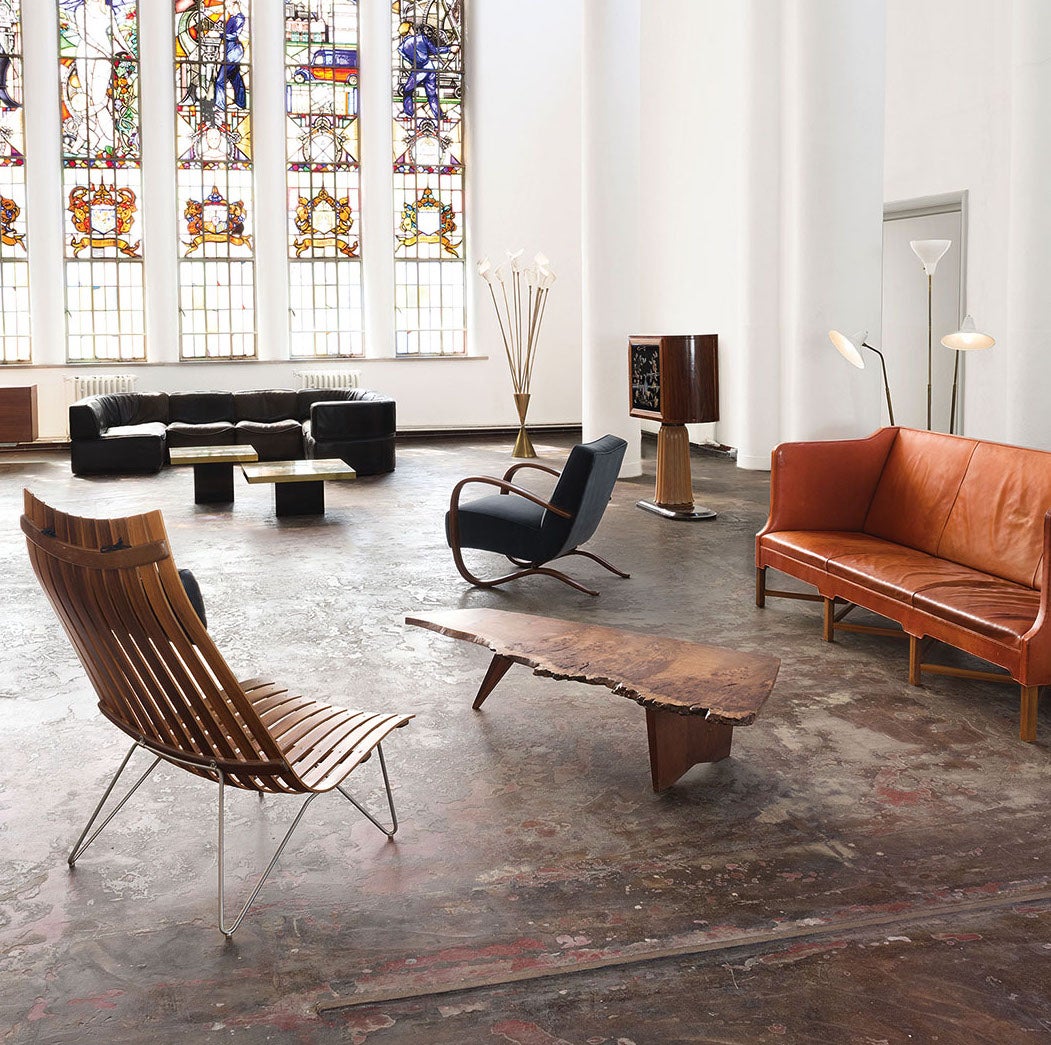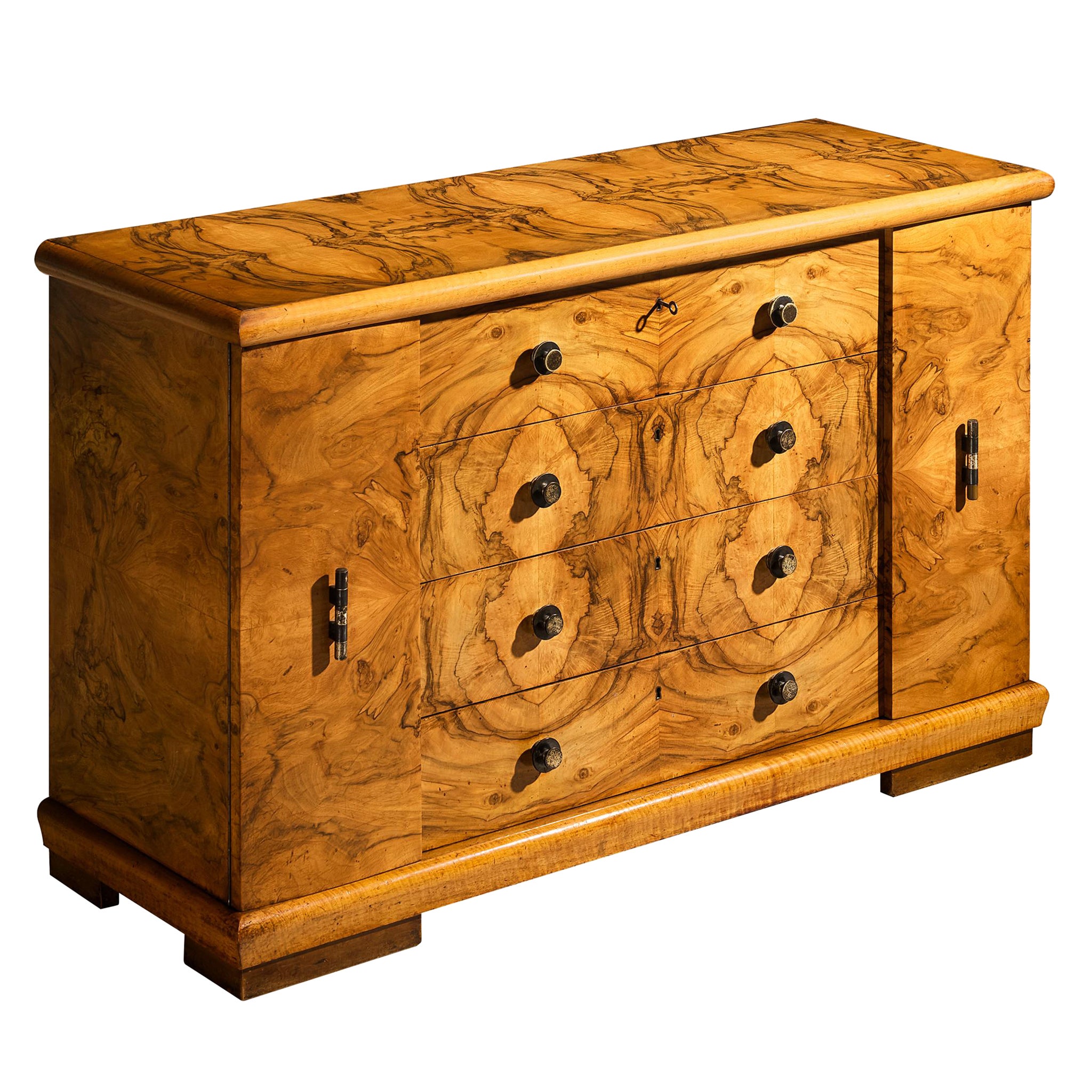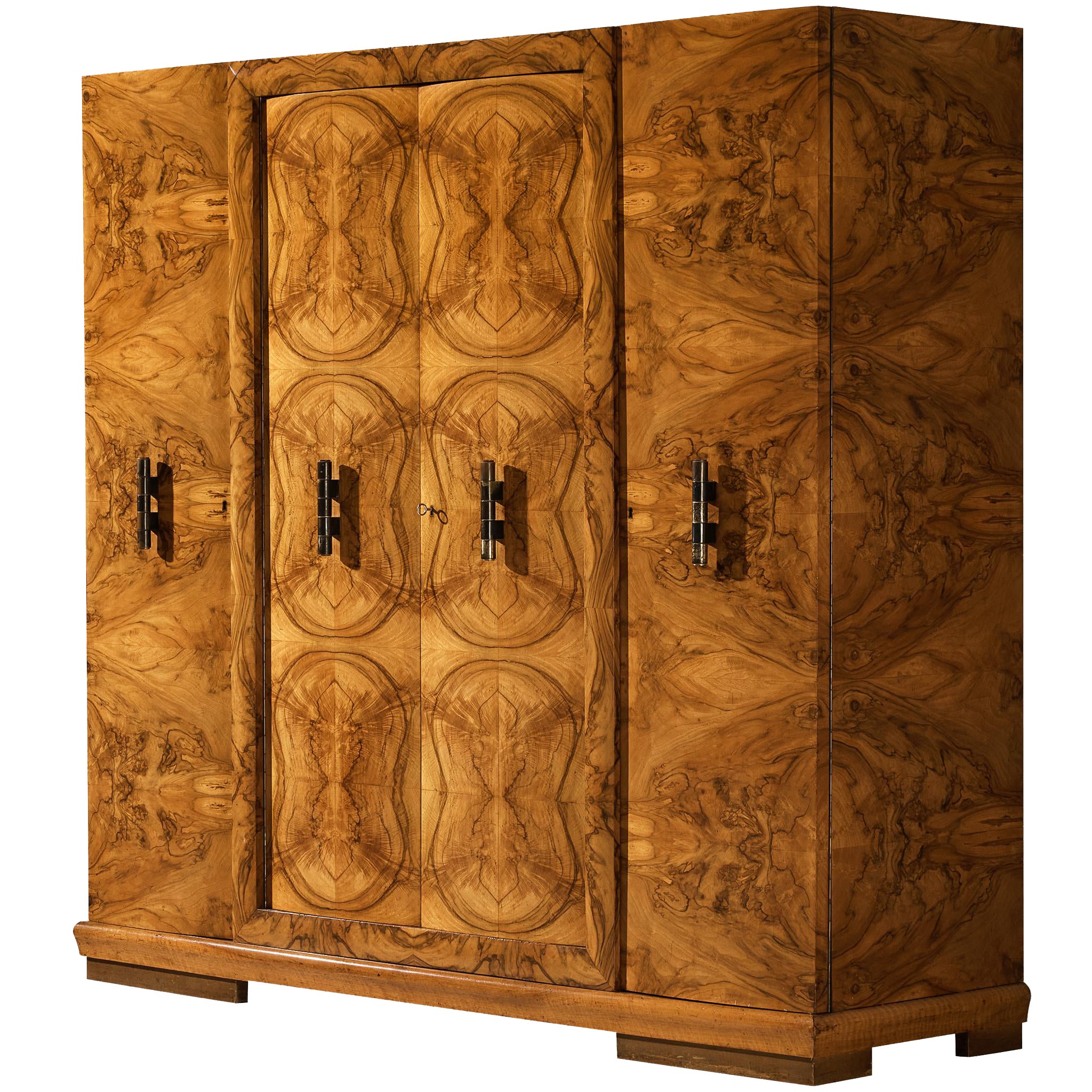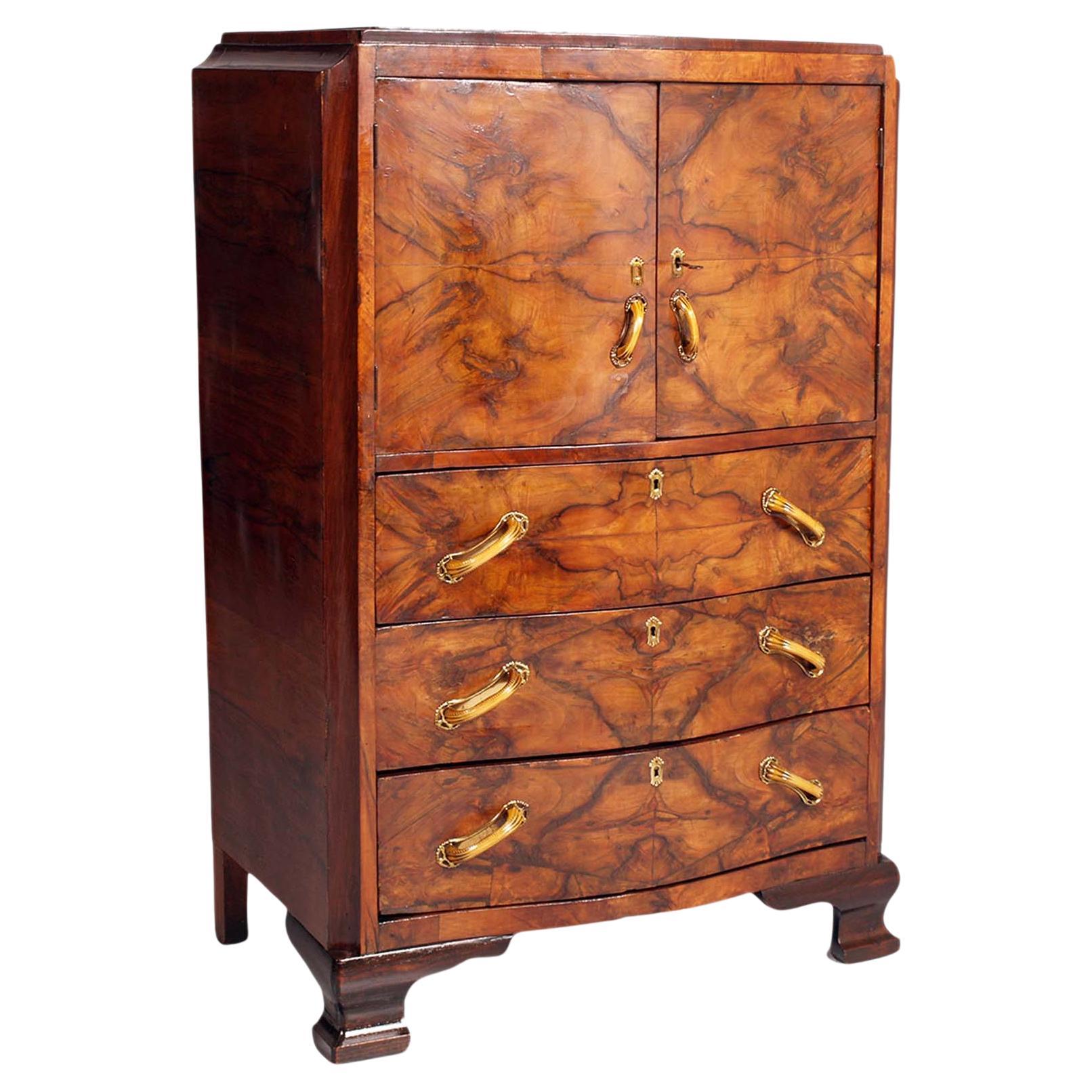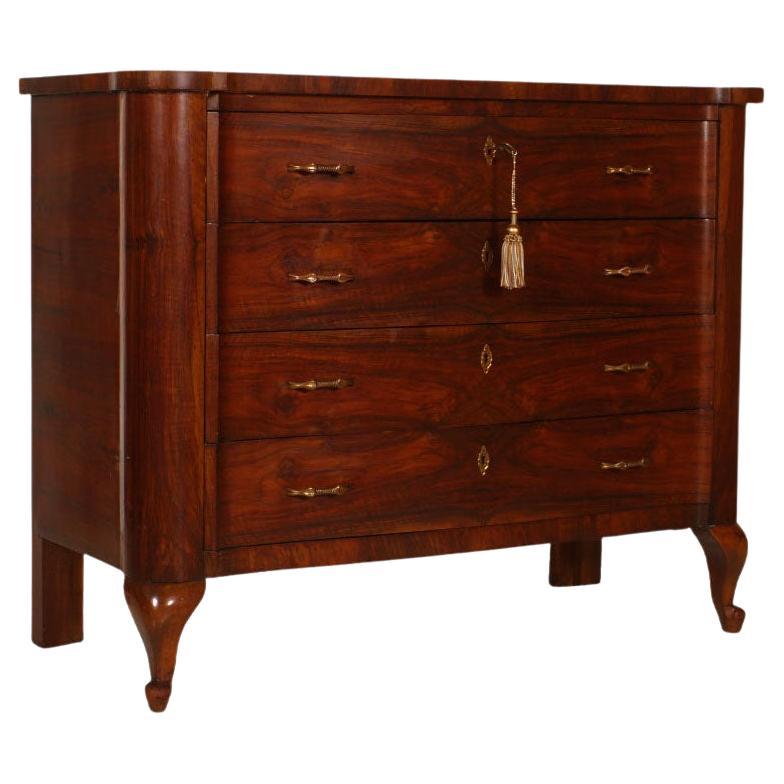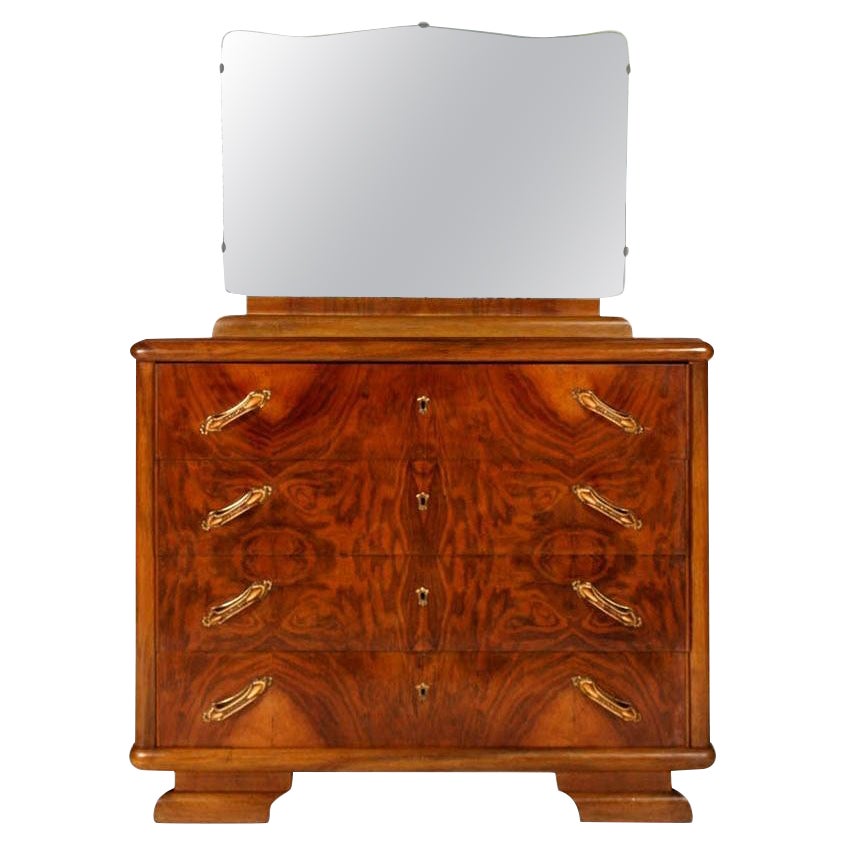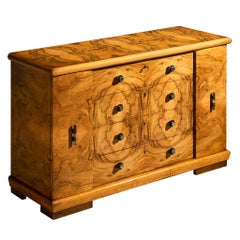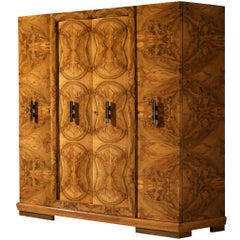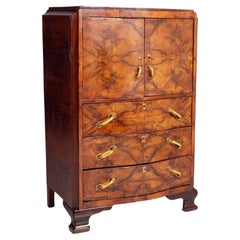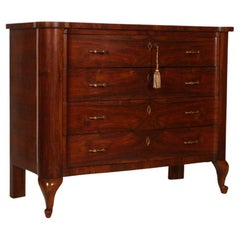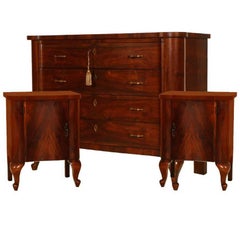Gaetano Borsani for Atelier di Varedo - Gaetano Borsani, vanity and stool, walnut burl, brass, linoleum, Milan, Italy, 1930
An exceptional vanity with matching stool designed by Gaetano Borsani, founder of the Atelier di Varedo, the workshop where his son Osvaldo Borsani’s artistic path would begin to take shape. This piece exemplifies geometric purity and material sophistication of 1930s Italian design, with walnut burl playing a central role. At the time, this richly figured wood was considered a luxury material, often found in the interiors of affluent Italian homes. The walnut burl here has been expertly bookmatched, a technique that creates a kaleidoscopic effect across the surface. The mirrored grain patterns appear almost organic in form: symmetrical, fluid, and deeply sensual. Its overall structure gives off a slightly monumental presence; a composition of clean, rectilinear forms that communicate solidity and restraint. It is essentially a large, block-like volume broken into three vertical sections: a dominant central body, which is subtly framed and slightly recessed, flanked by two narrower side compartments. The base is a low plinth with boxy feet that ground the piece visually, lifting it slightly from the floor but maintaining its sense of weight. The handles and round door knobs in brass are commanding accents that contrast elegantly with the organic fluidity of the walnut burl. The handles consist of stacked brass cylinders mounted vertically. This juxtaposition of elaborate surface and strict geometry reflects a distinctly 1930s Italian ethos: a commitment to refinement with an embrace of the modern and the natural.
Biography
In the shifting design landscape of early 20th-century Lombardy, one small workshop rapidly rose to prominence: Atelier di Varedo, founded in 1923 (also known as Atelier Borsani Varedo). This family-run enterprise would, in the span of just over a decade, become a touchstone of the Italian modern movement – bridging craftsmanship, innovation, and artistic vision. The roots of the Borsani family ran deep in the world of furniture-making. Maria Galimberti and Gaetano Borsani both descended from families who had been working wood and crafting interiors since the early 1800s. It was this generational knowledge – this embedded culture of artigianato – that Gaetano built upon when, shortly after World War I, he struck out to form his own studio. By the mid-1920s, his workshop employed around twenty workers, a modest but serious operation focused initially on producing period furniture, still very much in line with postwar bourgeois tastes.
But the Borsani workshop would not remain tied to the past. Quite the opposite. The firm had begun to pivot toward more modernist idioms. Pieces would take cues from the expressive geometry and stylized forms of Art Deco, and increasingly, from the sinuous, ornamental elegance of German Jugendstil. On the other, there’s an underlying solidity, almost sculptural, that gestures toward Novecento aesthetics, with even traces of Futurist abstraction in the bold contours and crafted dynamism of certain works. This wasn’t just a surface-level stylistic update; it was a philosophical shift in how furniture could be conceived, produced, and lived with. The workshop's internal library, filled with cutting-edge European design journals, speaks volumes about their appetite for international influence.
Central to this transformation was Gino Maggioni, a young architect brought into the fold as what we might now call the company’s creative director. Gaetano Borsani entrusted him with the aesthetic reins of the business, and Maggioni – wide-eyed and ambitious – did not disappoint. Maggioni's intellectual trajectory was shaped in part by his presence at one of the 20th century’s most iconic architectural gatherings: the first Congrès International d’Architecture Moderne (CIAM) in 1928 at the Château de la Sarraz. There, he encountered the likes of Le Corbusier, Gerrit Rietveld, Alberto Sartoris, and Pierre Chareau – names synonymous with European modernism. This experience would prove formative, not just for Maggioni personally, but for the direction of Atelier di Varedo. Under his stewardship, the company rebranded – at least partially – to reflect his authorship. It became Atelier di Varedo – diretto dall’architetto Gino Maggioni, Mobili d’arte G. e Gaetano Borsani Varedo. That label, verbose as it may seem, marks a fascinating moment in Italian design history: the co-signature of the artisan and the architect, of making and thinking. This was not simply furniture production – it was an atelier in the fullest sense of the word. By the early 1930s, Maggioni’s tenure had ended, and the company shifted its name once again: Atelier di Varedo, Gaetano Borsani Varedo (Milano), coinciding with the moment when Osvaldo Borsani began to take a more active role in shaping the future of his father’s enterprise.
